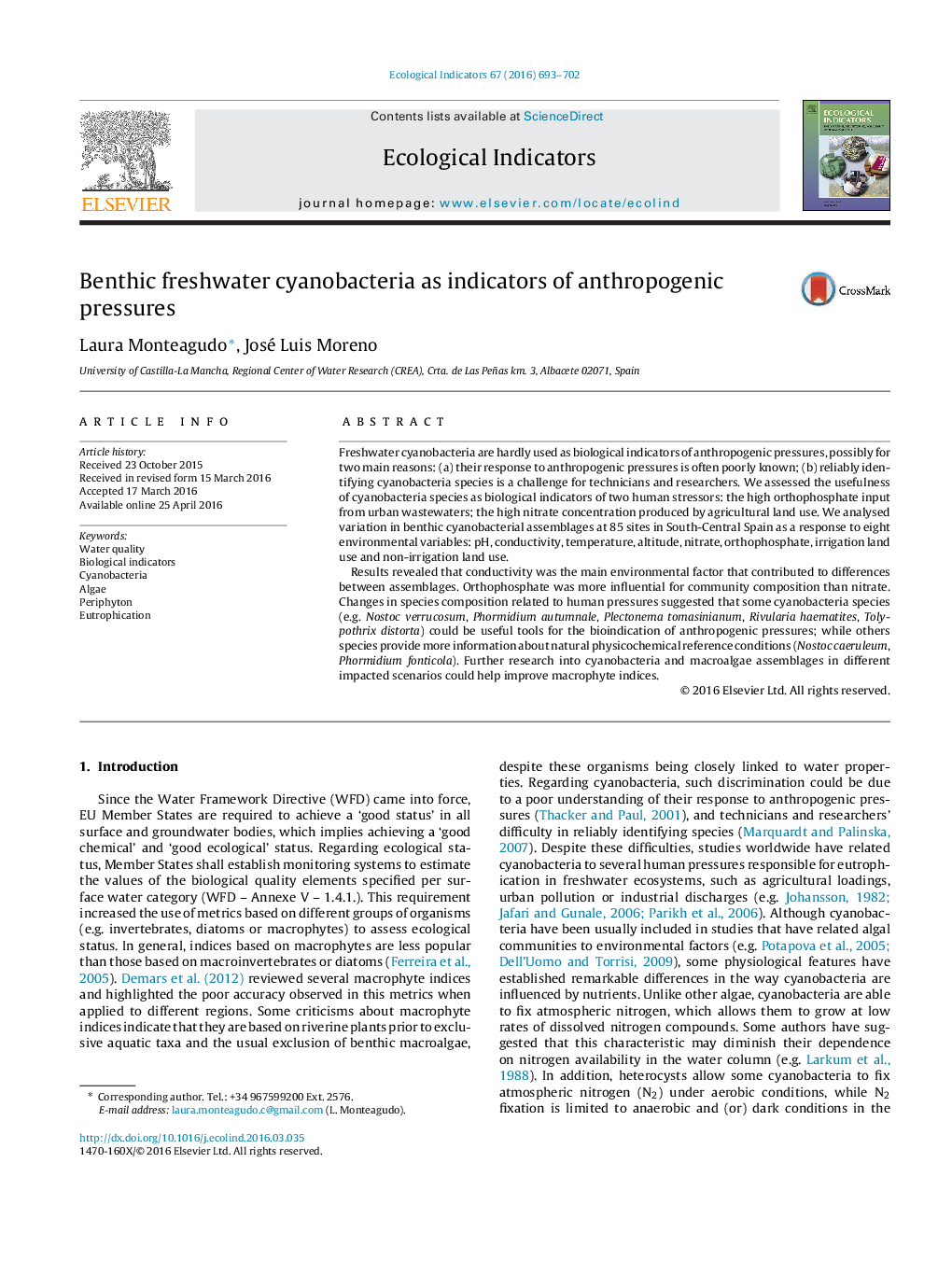| Article ID | Journal | Published Year | Pages | File Type |
|---|---|---|---|---|
| 4372914 | Ecological Indicators | 2016 | 10 Pages |
•Cyanobacteria suitable bio-indicators.•Conductivity most influential for species composition.•Phosphate more influential than nitrate.•Five species indicative of human pressures.
Freshwater cyanobacteria are hardly used as biological indicators of anthropogenic pressures, possibly for two main reasons: (a) their response to anthropogenic pressures is often poorly known; (b) reliably identifying cyanobacteria species is a challenge for technicians and researchers. We assessed the usefulness of cyanobacteria species as biological indicators of two human stressors: the high orthophosphate input from urban wastewaters; the high nitrate concentration produced by agricultural land use. We analysed variation in benthic cyanobacterial assemblages at 85 sites in South-Central Spain as a response to eight environmental variables: pH, conductivity, temperature, altitude, nitrate, orthophosphate, irrigation land use and non-irrigation land use.Results revealed that conductivity was the main environmental factor that contributed to differences between assemblages. Orthophosphate was more influential for community composition than nitrate. Changes in species composition related to human pressures suggested that some cyanobacteria species (e.g. Nostoc verrucosum, Phormidium autumnale, Plectonema tomasinianum, Rivularia haematites, Tolypothrix distorta) could be useful tools for the bioindication of anthropogenic pressures; while others species provide more information about natural physicochemical reference conditions (Nostoc caeruleum, Phormidium fonticola). Further research into cyanobacteria and macroalgae assemblages in different impacted scenarios could help improve macrophyte indices.
Graphical abstractFigure optionsDownload full-size imageDownload as PowerPoint slide
